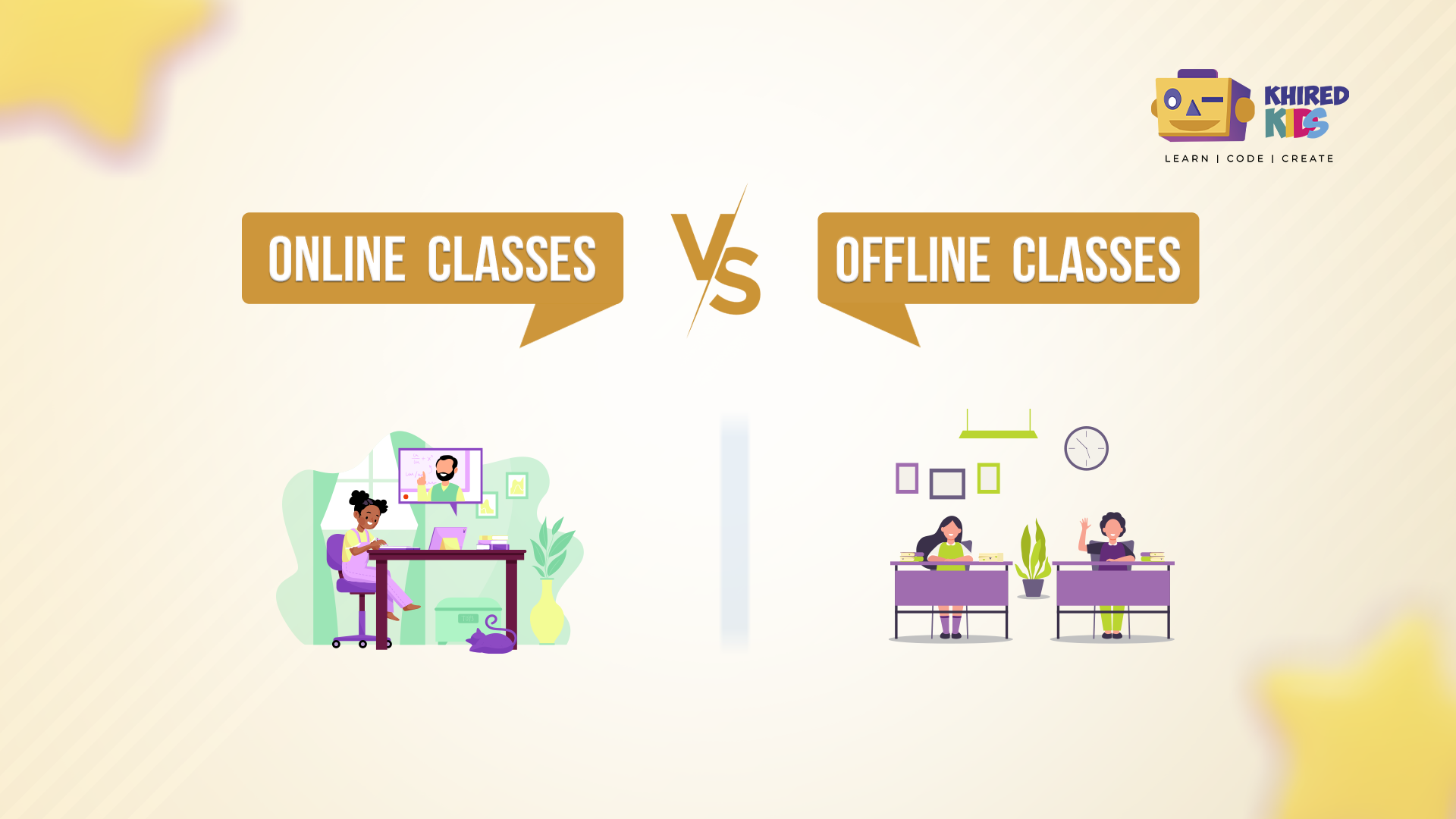Have we ever thought that we can do so many important tasks while sitting on the couch at home? The COVID pandemic changed everything. It taught us how to adjust when the world shuts down.
One of the greatest changes during this time was the shift to online classes. These classes played a very important role in providing STEM education for kids and students when physical classrooms were not possible.
Now, we have two choices, with technological advancements, between online and offline learning. But which is better for the kids? Let’s dive in and see how to make a correct comparison and understand both forms of learning better so that parents and students can make the right choice!
The Rise of Online Classes
Online classes have also gained popularity over the past years. Particularly in relation to the spread of the pandemic, this mode of learning has gained popularity. Children and parents worldwide, along with teachers, had to learn to embrace a different mode of learning in no time. Today, e-learning classes have been very much in vogue and even many students prefer them for convenience.
But do they match the traditional learning style of Offline classes? Let’s explore the pros and cons of both and help you to decide what best suits your child.
Advantages and Disadvantages of Online Classes
| Advantages of Online Classes | Disadvantages of Online Classes |
1. Flexible Time
| 1. Minus Social Interaction
|
2. The Ease of Learning from Anywhere
| 2. Excessive Screen Time
|
3. A Wide Scope of Resources Availability
| 3. Less Hands-On Learning
|
4. Ease All the way Comfortable Environment
| 4. Distractions at Home
|
5. Self-Discipline and Responsibility
| 5. Technical Issues
|
Advantages and Disadvantages of Offline Classes
| Advantages of Offline Classes | Disadvantages of Offline Classes |
1. Face-to-Face Interaction
| 1. Rigid Timetabling
|
2. Structured Learning Environment
| 2. Transportation Troubles
|
3. Immediate Feedback
| 3. Bullying and Peer Pressure
|
4. Practical Engagements
| 4. Less Personalized Learning
|
5. Lesser Screen Time
| 5. Illness and Absenteeism
|
Which One is Best for Your Child?
Online education or offline education, there is no shortcut to answering, though only you know what works best for your child, your family, and learning.
Offline classes might be good for very young children who love interacting, playing games, and are into the routine. Older students who love flexibility and self-directed learning would probably do well in online classes.
A Hybrid Approach?
Many schools now take the hybrid model, which is both online and offline. It gives the best of two worlds:
- The students attend some classes in class and complete other parts of the curricula from home.
- Parents and their children get to enjoy flexibility without losing out on social interaction and hands-on activities.
Final Words
Both the online and offline classes have pros and cons. But what matters in this regard is that parents should understand the requirements of their child and opt for the method that the child best fits into the mold, feels comfortable with, and serves his future long-term educational interests.
A balance in the coming years can prove to be just the right potion that would be required to set up the future for children. That is the effective combination of online and offline learning which may prove to be a haven for children to be given scope to grow in the foreseeable landscape of education.
So, if you choose online, offline, or a mix, it should at least provide an engaging and stimulating learning environment for your child.


0 Comments